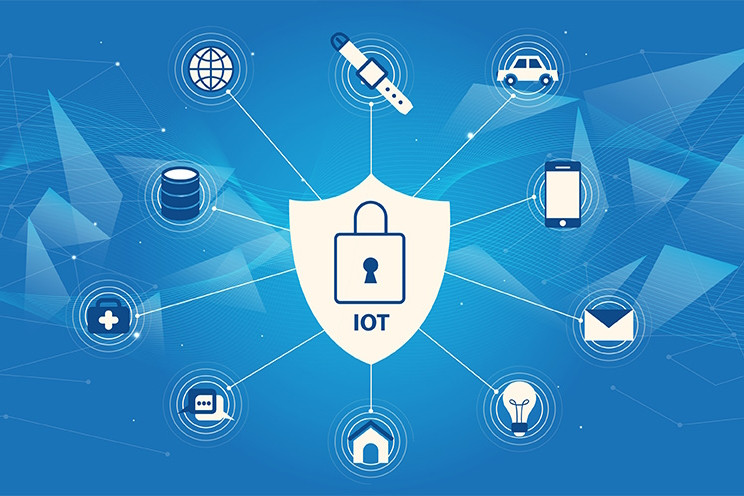Smart clinics are rapidly adopting Internet of Things (IoT) devices to improve patient outcomes, streamline operations, and offer real-time data collection. From wearable sensors and diagnostic tools to smart medication dispensers, these devices are transforming healthcare delivery. However, this increasing connectivity also opens the door to significant cybersecurity vulnerabilities. If not properly secured, these devices can become entry points for attackers. In this article, we’ll explore the major cybersecurity risks posed by IoT in smart clinics and how they can be effectively managed.
Inadequate Device Security Protocols
Most IoT devices in healthcare are built for performance and ease of use, not cybersecurity. They often lack robust features like built-in firewalls, data encryption, and antivirus software. Some even come with hardcoded or default passwords, making them easy targets. Due to limited processing power, installing security updates or patches is difficult. Many devices also operate on outdated firmware, and vendors may not provide timely updates. This poor security design leaves smart clinics vulnerable to cyberattacks that can compromise patient safety and overall network integrity.
Data Breaches and Patient Privacy Violations
IoT devices routinely collect sensitive patient data such as vital signs, medication usage, and medical histories. This information is often stored or transmitted without strong encryption, making it a target for cybercriminals. A successful breach could expose Electronic Health Records (EHRs), leading to identity theft or insurance fraud. These breaches may also result in non-compliance with data protection laws like HIPAA, resulting in hefty fines. The loss of patient trust and reputational damage could be even more detrimental than the financial consequences of such incidents.
Distributed Denial of Service (DDoS) Attacks
IoT devices are often exploited to launch Distributed Denial of Service (DDoS) attacks. Hackers use compromised devices to flood a clinic’s network with traffic, effectively shutting down critical systems. This can cripple appointment scheduling, EHR access, or even interfere with life-saving equipment. In a healthcare setting, this kind of disruption isn’t just inconvenient—it can be life-threatening. A smart clinic without DDoS protection could suffer prolonged outages, delays in patient care, and significant financial losses. Proactive network monitoring and segmentation can help mitigate these types of attacks.
Lack of Standardization Across Devices
IoT devices come from a range of manufacturers, each with their own security protocols, software, and update cycles. This lack of standardization leads to a fragmented and inconsistent security environment. Devices might not integrate well or may have conflicting firmware requirements, creating vulnerabilities. Without a uniform security framework, it becomes harder for IT teams to apply centralized protection strategies. These inconsistencies make it easier for hackers to exploit weak points between devices. Smart clinics need clear procurement policies and interoperability standards to maintain consistent security.
Remote Access Exploits
Many IoT devices in smart clinics are designed for remote monitoring, allowing healthcare providers to access patient data or control equipment from outside the clinic. However, if remote access features are not properly secured with strong authentication or VPNs, they become vulnerable to exploitation. Hackers can infiltrate the system, access sensitive data, and even manipulate device functions. This is especially concerning in cases involving critical medical devices. Remote access must be tightly controlled, with multi-factor authentication and encryption to safeguard both patient data and clinical operations.
Firmware Vulnerabilities and Delayed Updates
IoT devices run on embedded firmware that controls their basic operations. Unfortunately, this firmware often contains security flaws that are overlooked or not patched promptly. Many vendors delay firmware updates, and clinics may not apply them quickly due to resource constraints. Attackers actively search for devices running outdated firmware, knowing these are easy targets. Unpatched vulnerabilities can grant unauthorized access, allowing hackers to infiltrate wider clinical networks. Clinics must maintain an organized update schedule and prioritize devices from manufacturers with a strong update policy.
Insider Threats and Human Error
Human error remains one of the biggest cybersecurity risks in smart clinics. Employees may unknowingly connect unsecured devices, fail to change default passwords, or fall for phishing attacks. Former staff members who retain access credentials also pose a risk. Malicious insiders may intentionally exploit vulnerabilities for personal gain. Even with strong technology in place, careless or untrained users can open the door to attacks. Regular cybersecurity training and strict access control policies are essential to reduce the risk of internal threats and maintain secure operations.
Best Practices for Mitigating IoT Cybersecurity Risks
To safeguard their systems, smart clinics must adopt a multi-layered security approach. Start by segmenting networks so that IoT devices are separated from core infrastructure. Enforce strong authentication for both users and devices. Regularly update all firmware and software, and only use devices from vendors with proven security records. Ensure all communication is encrypted, and monitor systems in real time for anomalies. Equally important is staff education—train employees on safe practices, password management, and how to recognize threats. Using tools like Premium Clinic Management Software by Instacare can further enhance security and streamline operational oversight. These proactive steps reduce the attack surface significantly.
Conclusion
While IoT devices offer immense benefits to smart clinics, their integration introduces serious cybersecurity risks that must not be ignored. From weak device security and delayed firmware updates to DDoS attacks and insider threats, the dangers are real and growing. However, with a well-rounded cybersecurity strategy—including technical safeguards, policy enforcement, and user education—these risks can be effectively managed. Implementing solutions like a Tailored Electronic Health Record System can further support secure data management and compliance. Clinics must treat cybersecurity not as an afterthought but as a core component of patient care. In doing so, they can fully harness the power of IoT while protecting their patients and systems.

[…] Related: What Are the Cybersecurity Risks of IoT Devices in Smart Clinics? […]